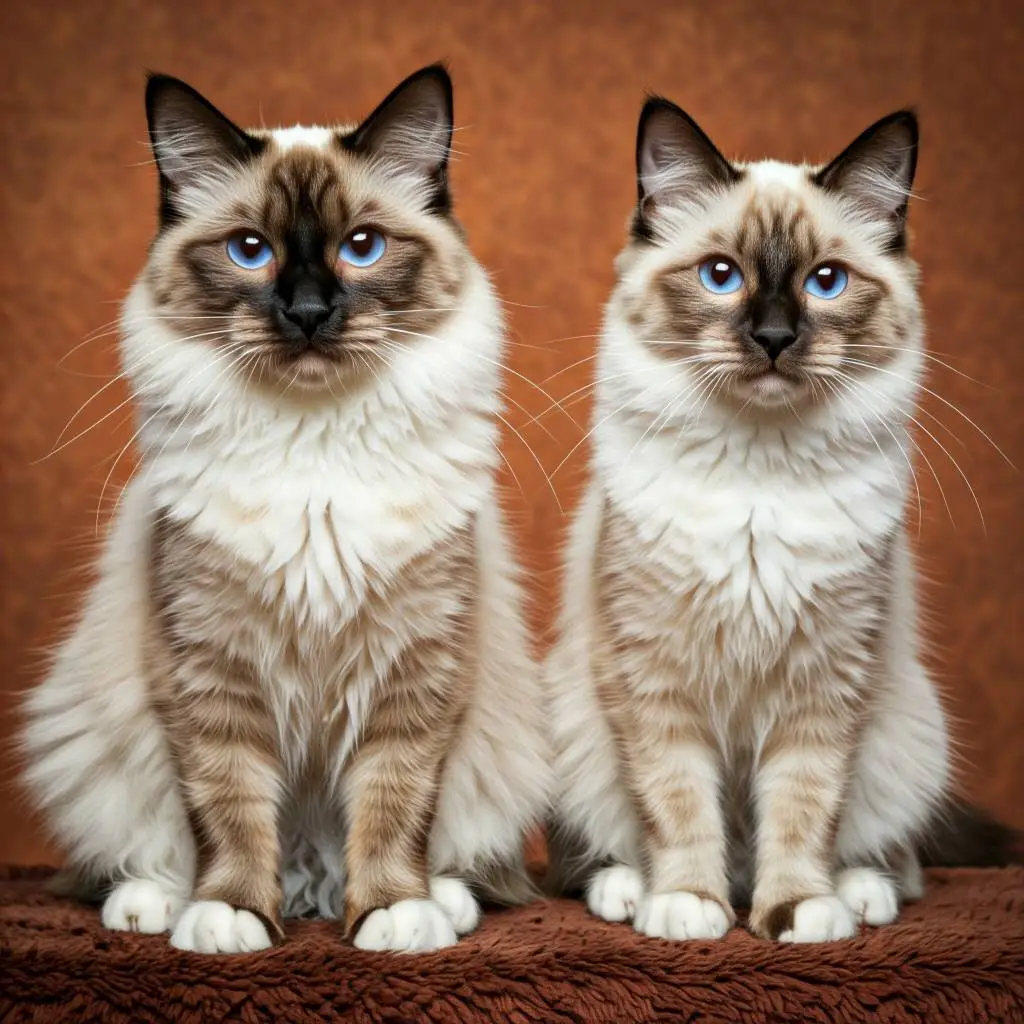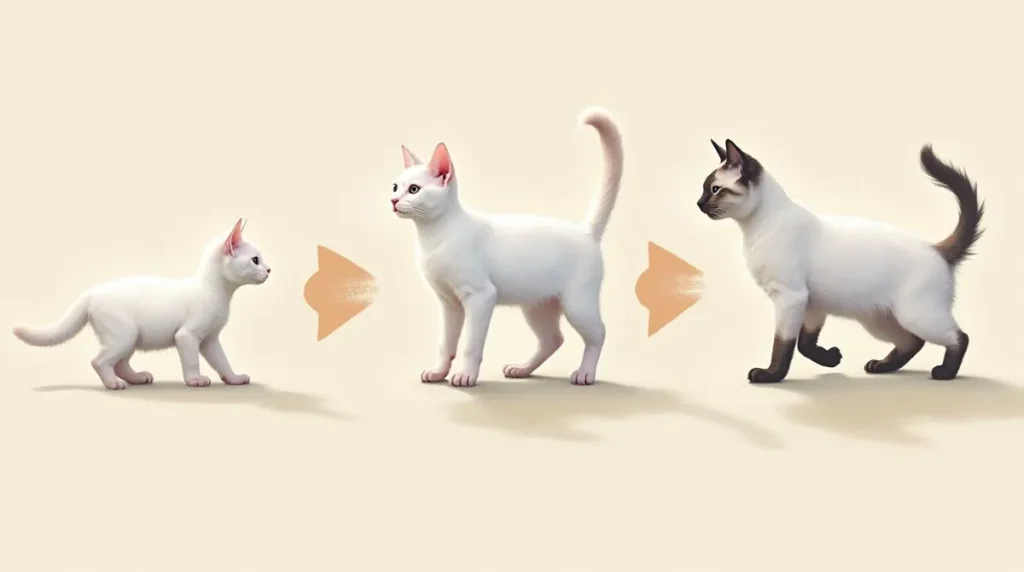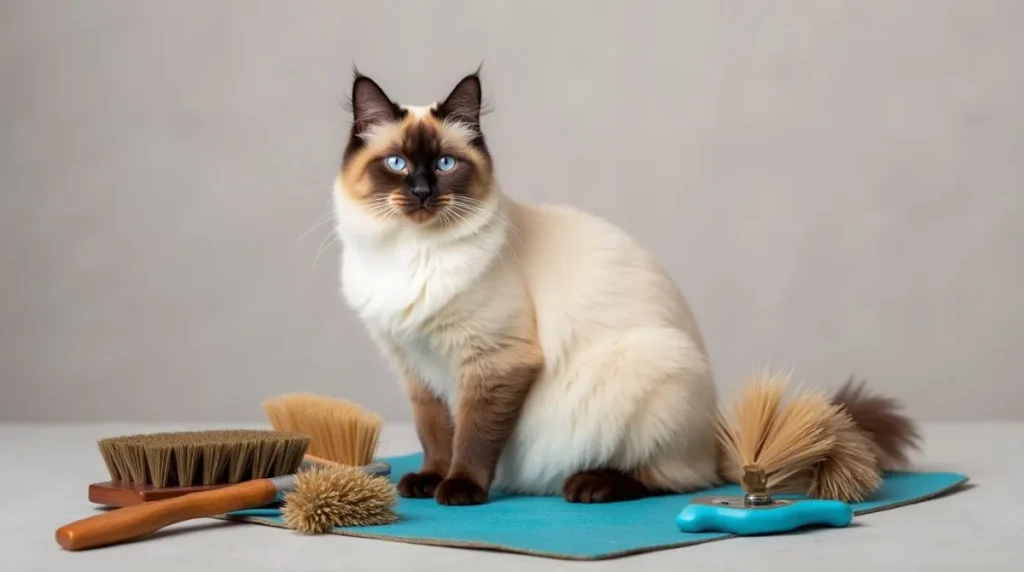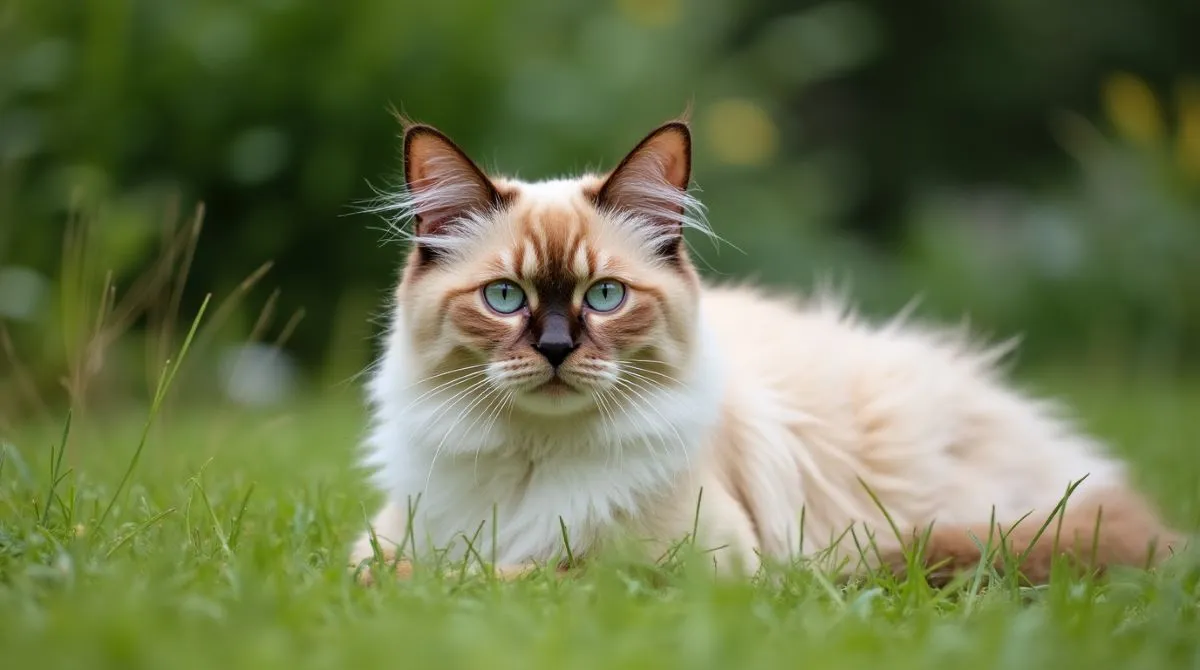Introduction
Birman cats are cherished for their captivating blue eyes, calm demeanor, and plush, elegant coats. However, a question that often arises among cat enthusiasts is, can a Birman cat have short hair? Known for their signature silky, long-haired appearance, the idea of a short-haired Birman cat may sound unusual. This blog post dives deep into this intriguing topic, exploring myths, facts, and fascinating insights about the Birman cat’s coat. Whether you’re a proud Birman owner or just curious about these elegant felines, you’ll find the answers you’re looking for right here.
Table of Contents
Understanding the Birman Cat’s Coat
The Signature Long Coat of Birman Cats
Birman cats are renowned for their distinctive, long-haired coats that exude elegance. Their fur is soft and silky to the touch, lacking the dense undercoat often found in other long-haired breeds. This unique texture not only makes them stand out visually but also contributes to their reputation as one of the most beautiful cat breeds. Their coat comes in a pointed pattern, typically with lighter bodies and darker coloring on their ears, face, paws, and tail. This combination of luxurious length and striking coloration adds to their charm, making them a favorite among cat lovers worldwide.
Why Short Hair Is Rare in Birmans
The possibility of a Birman cat having short hair is extremely rare and mostly tied to genetics. Birman cats are purebred, and their long-haired coats are a hallmark of the breed, maintained through careful breeding practices. Coat length in cats is influenced by genetic factors, specifically the FGF5 gene, which determines whether a cat will have long or short fur. Birman cats typically inherit the long-haired trait from both parents. While genetic mutations or crossbreeding could potentially result in a Birman-like cat with short hair, such cases are highly unusual and would not align with the breed standard.
Do Birman Cats Shed a Lot?
Despite their long fur, Birman cats are moderate shedders compared to other breeds with similar coats. Their lack of an undercoat means they are less prone to heavy shedding or matting. However, they do experience seasonal shedding, particularly in spring and fall, as their coat adjusts to temperature changes. Regular grooming is essential to manage shedding and maintain their coat’s silky texture. Brushing your Birman cat’s fur two to three times a week can help reduce loose hair, prevent tangles, and keep their coat looking its best.

Can a Birman Cat Have Short Hair? Myth vs. Reality
The Myth of Short-Haired Birman Cats
Birman cats are widely recognized for their luxurious, long-haired coats, but misconceptions about short-haired Birmans persist. These myths often arise from confusion between Birman cats and other breeds with similar coloration, such as Siamese or Tonkinese cats, which naturally have shorter fur. Additionally, some people assume that variations within the breed might produce a short-haired Birman. This misunderstanding is fueled by misinformation in pet forums and incorrect labeling of mixed-breed cats with Birman-like features as “short-haired Birmans.” In reality, the breed standard for Birman cats requires a long, silky coat, and any deviation from this trait would likely indicate a mixed ancestry rather than a purebred Birman.
Are There Short-Haired Birman Cats?
Short-haired versions of Birman cats do not exist within the breed’s official lineage. The Birman breed has been carefully maintained to preserve its unique traits, including its striking long-haired coat. This characteristic is tied to the FGF5 gene, which controls hair length in cats. Both parent cats must carry the genetic marker for long fur to produce offspring with this signature feature. While genetic mutations or intentional crossbreeding could theoretically result in a Birman-like cat with shorter hair, such cases would fall outside the breed’s recognized standard. A short-haired cat resembling a Birman would likely be a hybrid rather than a true Birman.
Why Birman Cats Are Not Hypoallergenic
Some pet owners mistakenly believe that coat length correlates with allergen levels, assuming that shorter hair might make Birman cats hypoallergenic. However, allergens like Fel d 1 are found in a cat’s saliva, skin, and dander—not its fur length. Despite their lack of an undercoat, Birman cats are not hypoallergenic. Regular grooming can help minimize shedding and dander, but those with severe allergies should consult an allergist before adopting any breed.
How to Care for a Birman Cat’s Coat
Grooming Essentials for Long-Haired Cats
Caring for a Birman cat’s luxurious coat requires regular grooming to maintain its silky, tangle-free appearance. Unlike some other long-haired breeds, Birman cats lack a dense undercoat, making their fur easier to manage. However, neglecting their grooming needs can still lead to matting and discomfort. Essential grooming tools include a wide-tooth comb, a slicker brush, and a soft bristle brush. Begin by using the wide-tooth comb to gently detangle any knots or matted areas, paying special attention to spots like behind the ears, under the armpits, and around the hind legs where mats often form. Follow up with a slicker brush to remove loose hair and a soft bristle brush to smooth and polish the coat. Regular grooming sessions, ideally two to three times a week, are recommended to keep their fur in optimal condition.
Managing Shedding in Birman Cats
Although Birman cats are moderate shedders compared to other long-haired breeds, they do experience seasonal shedding. During spring and fall, their coats transition in response to changing weather, leading to an increase in loose fur. Develop a regular grooming schedule to effectively control shedding. Using a de-shedding tool during high-shedding periods can help reduce the amount of hair your cat sheds around your home. Additionally, regular brushing helps capture loose hair before it can spread, keeping both your cat and your living space cleaner. A healthy diet also plays a vital role in coat management; high-quality cat food rich in omega-3 and omega-6 fatty acids promotes a shiny, healthy coat and minimizes shedding. Bathing your Birman occasionally, using a cat-safe shampoo, can further reduce loose fur, but this should only be done as needed to avoid drying out their skin.
Preventing Mats and Tangles
One of the most important aspects of maintaining a Birman cat’s coat is preventing mats and tangles. Mats not only detract from the cat’s appearance but can also cause discomfort and skin irritation. To avoid matting, inspect your cat’s coat regularly, focusing on high-friction areas like the belly and behind the legs. Gently detangle small knots as soon as you notice them using your fingers or a detangling comb. If mats become too tight or extensive, seeking professional grooming assistance may be necessary to avoid harming your cat’s skin. For routine maintenance, keeping the coat well-brushed and knot-free is the best preventive measure.
In addition to physical grooming, environmental factors can also impact matting. For example, cats that spend more time outdoors may accumulate dirt or debris that contributes to tangling. Regularly checking and cleaning these areas ensures your Birman’s coat remains pristine. Furthermore, making grooming sessions a positive experience by incorporating treats and gentle handling can help your cat associate grooming with comfort rather than stress.
By maintaining a consistent grooming schedule, managing shedding proactively, and preventing mats and tangles, you can ensure your Birman cat’s coat stays as beautiful and healthy as their personality.
Fascinating Facts About Birman Cat Coats
The Genetics Behind Their Coat Color
Birman cats are renowned for their striking pointed coat patterns, a result of specific genetic factors. The pointed coloration occurs due to a temperature-sensitive enzyme that affects pigment production. This enzyme causes darker pigmentation in cooler areas of the body, such as the ears, face, paws, and tail, while the warmer areas, like the torso, remain lighter. This unique genetic trait creates the signature appearance of Birman. The birman cat colors come in various shades, including seal, blue, chocolate, and lilac points, adding to their allure. Interestingly, Birman kittens are born entirely white, with their pointed markings gradually developing over the first few months of life.

Seasonal Coat Changes in Birmans
Birman cats experience noticeable seasonal changes in their coats, adapting to shifts in climate. During colder months, their fur becomes denser and fluffier to provide insulation, while in warmer seasons, they shed this excess fur, leaving their coat lighter and more manageable. These changes are most prominent during spring and fall, when shedding increases significantly. Regular grooming during these transitional periods is crucial to help remove loose hair and prevent matting, ensuring your Birman remains comfortable and their coat stays in pristine condition.
Why Birman Cats Are Unique Among Long-Haired Breeds
Compared to other long-haired breeds like Persians or Ragdolls, Birman cats have a distinctive coat that sets them apart. Unlike Persians, whose thick undercoats require extensive grooming, Birmans lack an undercoat, making their fur easier to maintain. Similarly, while Ragdolls share a similar pointed coloration, Birman cats are smaller in size and possess a uniquely silky coat texture. These traits make Birmans not only visually stunning but also a more manageable choice for those seeking a long-haired companion.
Choosing the Right Pet Care Routine for Your Birman
Tailoring Grooming Schedules for Your Birman
To keep your Birman cat’s coat in top condition, tailoring their grooming schedule is essential. On a daily basis, check for any tangles or loose hair, especially around the neck, belly, and behind the ears. Weekly, brush their coat thoroughly with a wide-tooth comb to prevent mats and distribute natural oils. During seasonal changes, particularly in spring and fall, increase grooming frequency to handle excess shedding and prevent tangles from forming. Adjusting your grooming routine to their needs ensures their coat remains silky and manageable year-round.
Best Tools for Birman Coat Maintenance

The right grooming tools are essential for maintaining your Birman’s coat. A wide-tooth comb is perfect for detangling, while a slicker brush helps remove loose fur and keeps their coat smooth. A soft bristle brush can be used to finish the grooming session, giving their coat a polished shine. Additionally, a de-shedding tool can be beneficial during shedding seasons, as it helps remove loose hairs efficiently without damaging the coat. Using high-quality grooming products ensures that their fur remains healthy and beautiful.
Health Benefits of Regular Grooming
Regular grooming is not only important for appearance but also for your Birman’s overall health. It helps stimulate blood circulation, reduces the risk of skin conditions, and keeps their coat free from mats that could cause discomfort. Regular grooming allows you to spot potential skin problems or parasites, ensuring your cat stays healthy.
Conclusion
In conclusion, the question can a Birman cat have short hair is rooted in common myths and misconceptions about the breed. While some might wonder if short-haired versions of Birman cats exist, the truth is that their long, silky coat is one of the breed’s most distinctive features. This luxurious fur requires regular grooming and care to keep it healthy and free from mats. Birman cats are unique among long-haired breeds, offering a manageable coat that, with the right tools and routine, remains stunning. If you have any thoughts or personal experiences with Birman cats, feel free to share them in the comments below—we’d love to hear from you!

